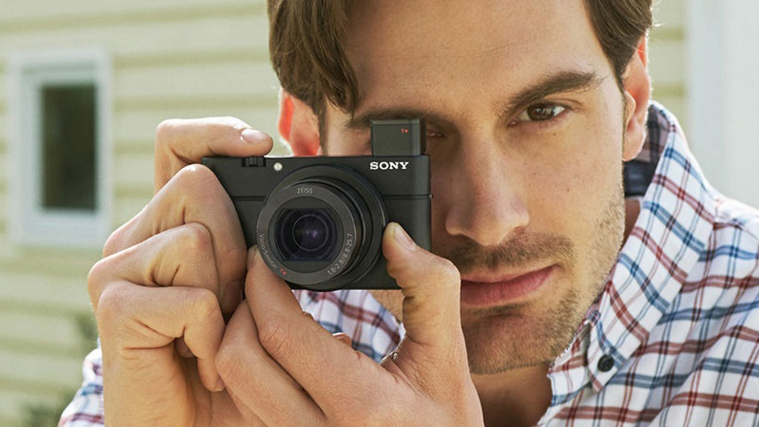Why you can trust TechRadar
Sony hasn't played around much with the design of the RX100 series in the past, and it's the same story here – the only obvious difference between the Mark IV and the Mark III is the markings on the top plate.
The RX100 IV is a satisfyingly small camera considering the (relatively) large size of its sensor, and it's small enough to fit comfortably inside a jacket or cargo pocket.
There are two ways of switching on the camera: you can use the on/off button on the top, or release the pop-up viewfinder via a switch on the side. As with the Mark III, activating the viewfinder is a two-step process – having popped it up you then need to pull it backwards from the housing. It would be nice if this was an automated process, which is something you might expect in a camera of this price.
The viewfinder switches on automatically when you lift the camera to your eye, and the screen is simultaneously switched off; it's a fairly typical and intuitive system, although you can switch off the automation if you prefer.

The viewfinder is quite large and bright, but because there's no eye-cup you may find that you can still see the scene around you when using it – sometimes this may be advantageous, other times it'll be distracting. Pushing the viewfinder back into its housing switches the camera off, but again you can turn off this function if you want.
Flipping the RX100 IV's screen up to face forwards puts the camera into self-timer (aka selfie) mode – you'll need to move the viewfinder out of the way for a full view of the screen.
On the top of the RX100 IV is a mode dial with all the usual exposure modes, including aperture priority and full auto. Helpfully, there's also a setting labelled MR (memory recall), under which you can save a set of custom shooting settings. You'll also find a HFR, or high frame rate, mode, which gives you access to the slow-motion video options.
A switch around the shutter release button controls the zoom, while a ring around the lens can be customised to control different parameters. By default this controls particular settings in different modes – aperture in aperture priority mode for instance – but it may make more sense to you to set it to something else, such as exposure compensation; other options include ISO, white balance, Creative Style or zoom.
There's also a small custom button which can be set to more than 40 different options, including ISO, metering mode and white balance.

Setting the autofocus point is pretty easy if you have the Flexible Spot area option selected: simply press the large central button on the back of the camera, then use the scrolling dial (which doubles as a navigation pad) to set the point you need. It would be simpler still if there was a touchscreen, though, and it remains disappointing that Sony chooses not to include these in its high-end compacts.
Pressing the Fn (function) button brings up a 'quick' menu, which can be fully customised to include the settings you want to adjust most often. I found it useful to include Quality as one of the options, as it enabled me to quickly switch to JPEG-only shooting, which is something which you frustratingly need to do in order to use certain settings such as Picture Effects.
This is something we've criticised in Sony cameras before, as it not only adds an extra level of faff when you're trying to get a shot; it also means you don't have a 'clean' version of the image to work with if you later decide you don't like the filter effect.
Setting up the Wi-Fi functionality is quick, and once you've entered the password into your device it's even quicker; and if you have an NFC-enabled device you simply have to tap it and the camera together to pair them. You can control the camera from your phone using the Smart Remote app, which enables you to adjust a useful range of settings including ISO, aperture, exposure compensation, focus point and zoom.
Amy has been writing about cameras, photography and associated tech since 2009. Amy was once part of the photography testing team for Future Publishing working across TechRadar, Digital Camera, PhotoPlus, N Photo and Photography Week. For her photography, she has won awards and has been exhibited. She often partakes in unusual projects - including one intense year where she used a different camera every single day. Amy is currently the Features Editor at Amateur Photographer magazine, and in her increasingly little spare time works across a number of high-profile publications including Wired, Stuff, Digital Camera World, Expert Reviews, and just a little off-tangent, PetsRadar.

